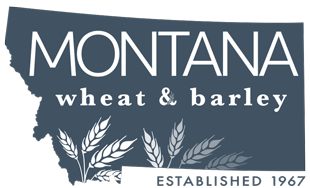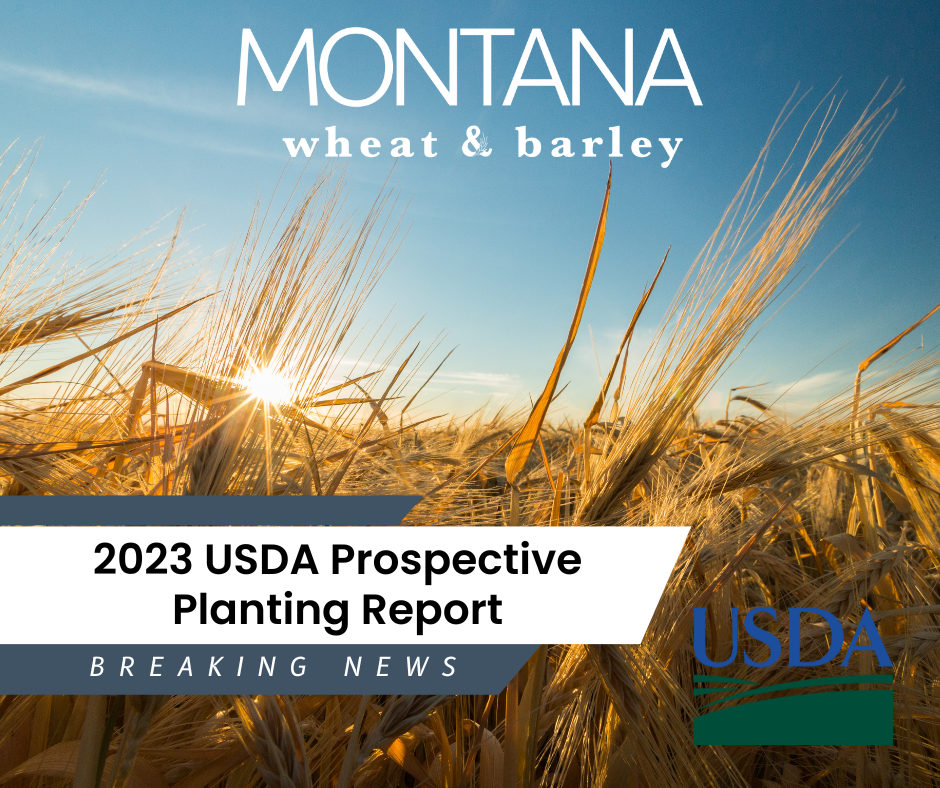Author: Sam Anderson
Here in Montana there are a few indicators that spring is just around the corner, the bears are waking up from hibernation, the bulls are relishing a job well done as calving is in full swing, and the Montana Prospective Planting Report is released. This year the bears and bulls joined hands in the head-scratching 2023 USDA prospective planting report. Not much change in the planting front for the treasure state.
Montana Planted Acres Snapshot
Barley: 1,090,000 Acres, Up 6% (U.S. down 1%)
Winter Wheat: 2,000,000 Acres, Down 2% (U.S. up 13%)
Durum: 730,000 Acres, Up 3% (U.S. up 9%)
Spring Wheat: 2,600,000 Acres, Down 4% (U.S. down 2%)
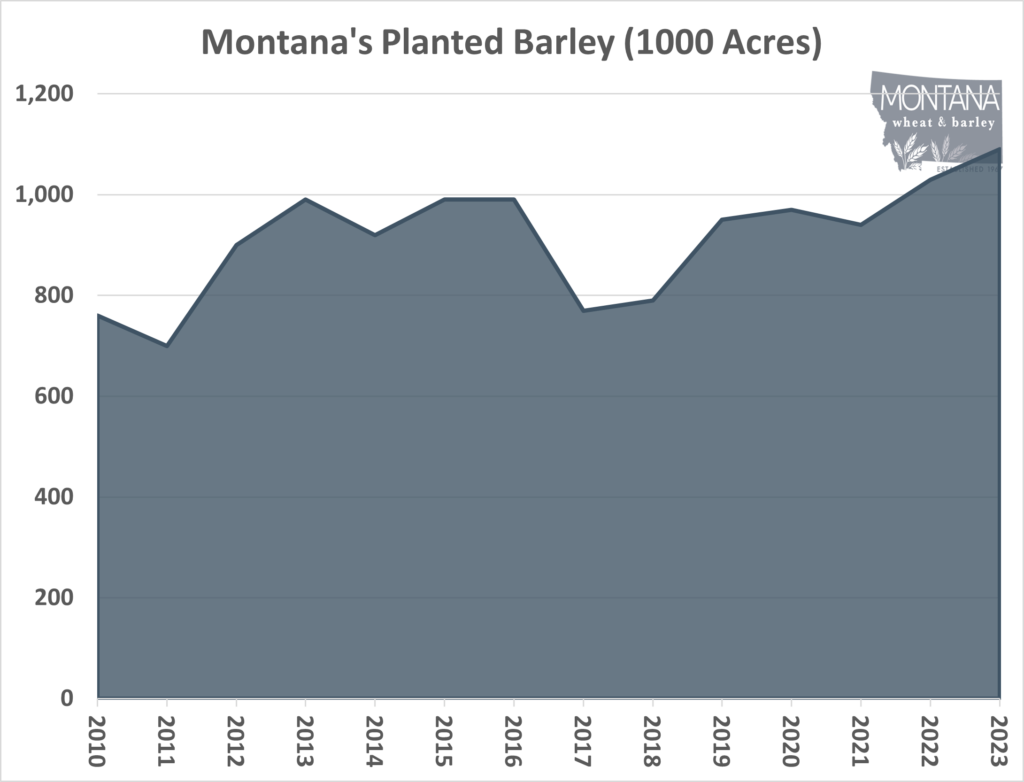
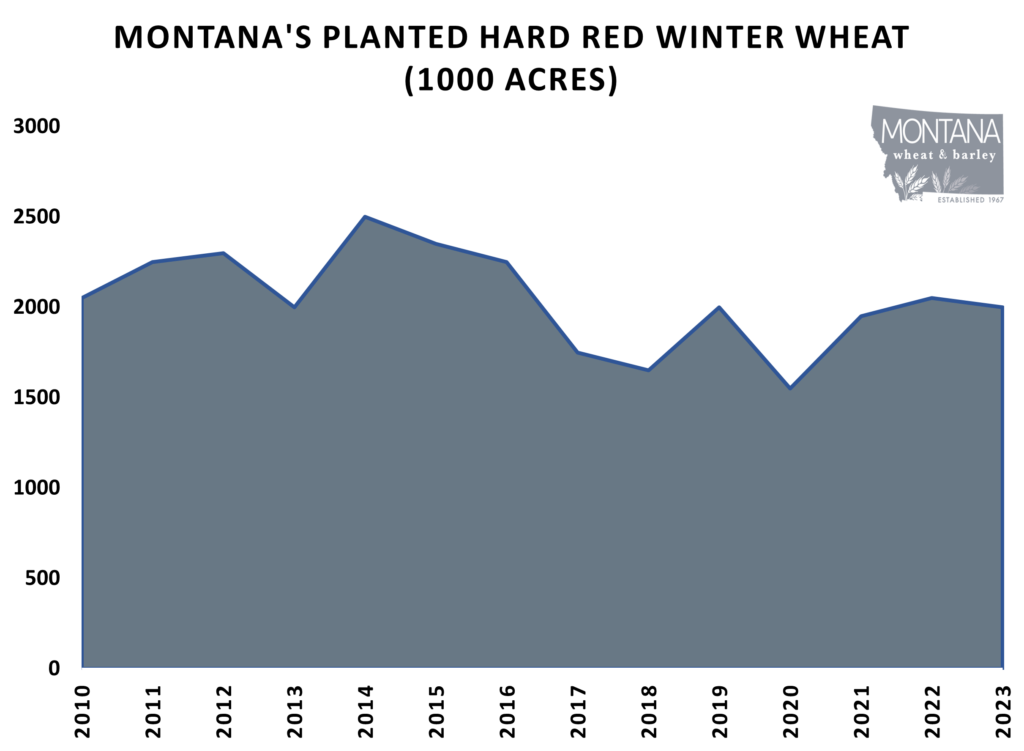
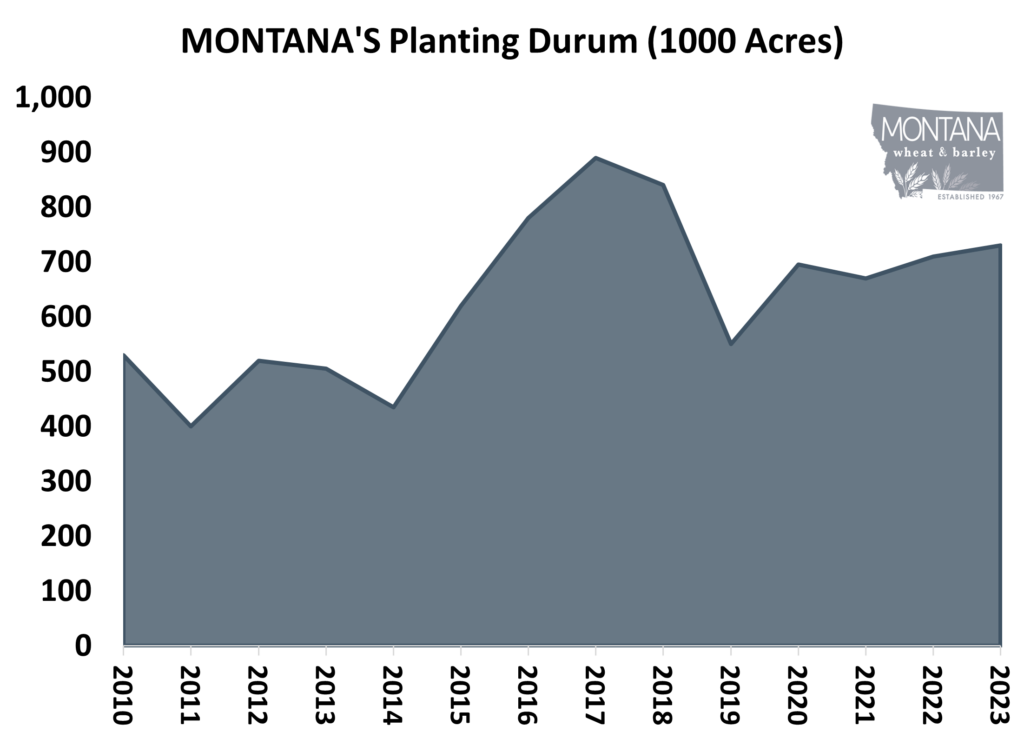
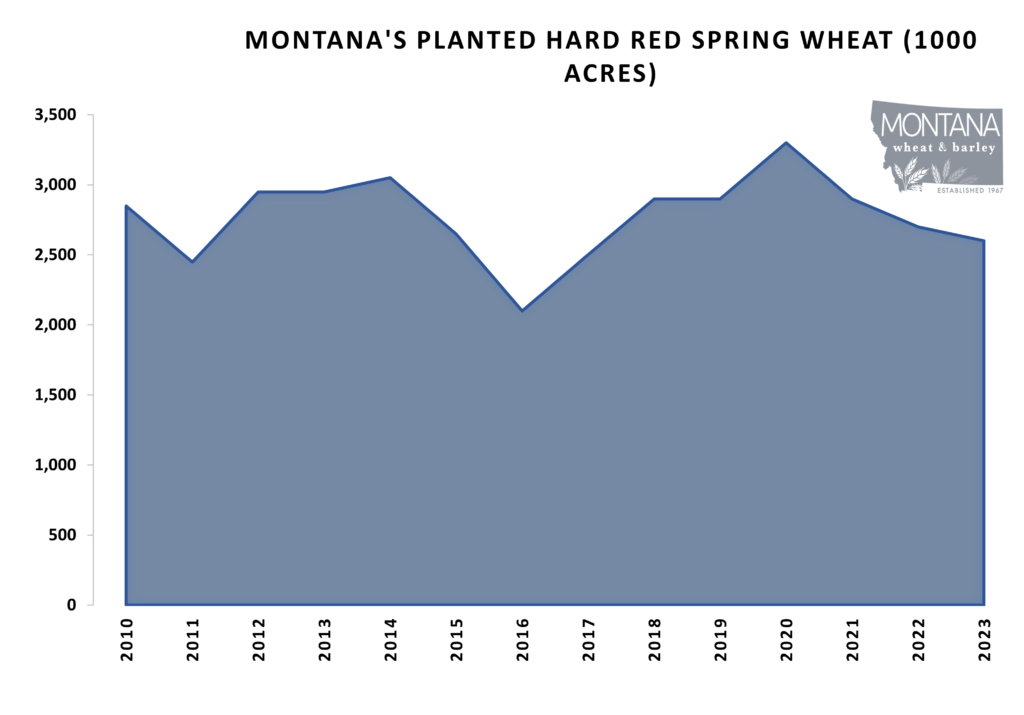
Is it Reliable?
The question we ask is how much should you base your marketing decisions on this data? 73,000 farmers on average respond to the survey and the answer is, within a 20% margin of error, go for it! Certain crops such as corn and winter wheat have had much better historical predictions. While barley, durum, and spring wheat can be seen ranging from 21.2% in durum, 7.4% in barley, and 5.6% in spring wheat. A 2.2% margin of error in corn can give or take 1.8 million acres, slightly larger than the entire state of Delaware.
From the words of District 5 Director Charlie Bumgarner:
“A single tweet can move the market 50 cents at any given moment.”
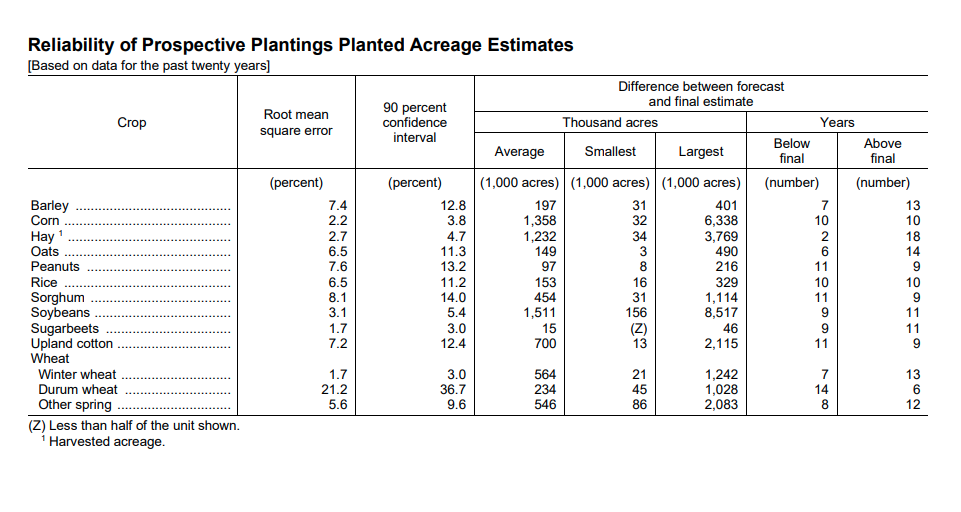
Weather Impacts on the 2023 Growing Season
Author: Meteorologist Jason Laird
As we near the 2023 growing season in Montana, there are three elements that meteorologists are watching closely. These weather elements will be the primary influencers of our weather this summer and dictate how the growing season plays out. These factors are El Niño – Southern Oscillation (ENSO), Pacific Decadal Oscillation (PDO), and the Quasi-Biennial Oscillation (QBO).
In terms of the ENSO, we’re watching how quickly the shift happens from La Niño to El Niño. The faster this transition happens the higher the probability of a hot and dry growing season this year. A common misconception is that since La Nina brought dry weather to Montana, El Nino must bring the opposite; unfortunately, this is not the case. Ultimately the longer we stay in a neutral stage the better! The fade from La Niño to a Neutral stage has been rapid to this point which is not what we want to see long term.
As for the PDO, this is described as a long-lived El Niño-like pattern of Pacific climate variability (Zhang et al. 1997). More simply put the PDO is referring to the ocean temperature patterns in the North Pacific Ocean. Currently, they are colder than average which means we have a negative PDO situation. A negative PDO is beneficial for Montana because it tends to help develop more storm systems off the Pacific coast that in turn can bring more moisture to Montana. A negative PDO also helps to keep a strong high-pressure ridge from building over the Pacific Northwest. A strong high-pressure ridge can lead to hot, dry, and windy conditions in Montana.
Finally, the QBO is a stratospheric wind phenomenon located along the equator and generally cycles every 28 to 29 months. For the last two years or so we’ve been in a negative QBO situation with tells us that these upper-level stratospheric winds along the equator were easterly. Easterly upper-level winds can play into high-pressure blocking which means hot and dry conditions in Montana. The good news is that we’ve recently switched to a positive OBO which ultimately helps with atmospheric flow over the United States.
To Wrap Up…
Without making a full-on prediction as to how the 2023 growing season will play out weather-wise, let’s recap what we’re dealing with. Two of the three major elements at play this summer are in our favor, those being the PDO and QBO. Arguably the biggest player in the game, the ENSO, is still a bit of an unknown. If La Niño continues to fade as rapidly as it has been and El Niño takes over early in the growing season, a hot and dry summer is almost certain despite the other elements in our favor.
